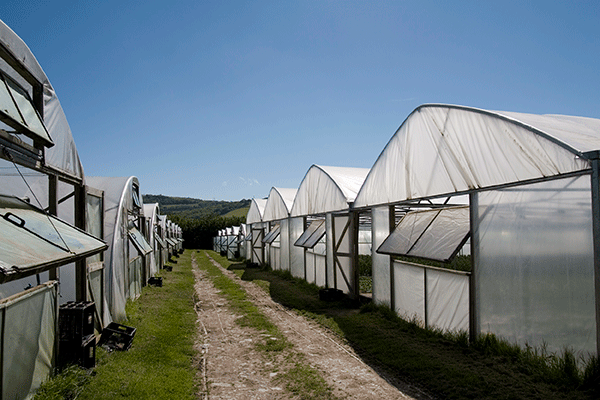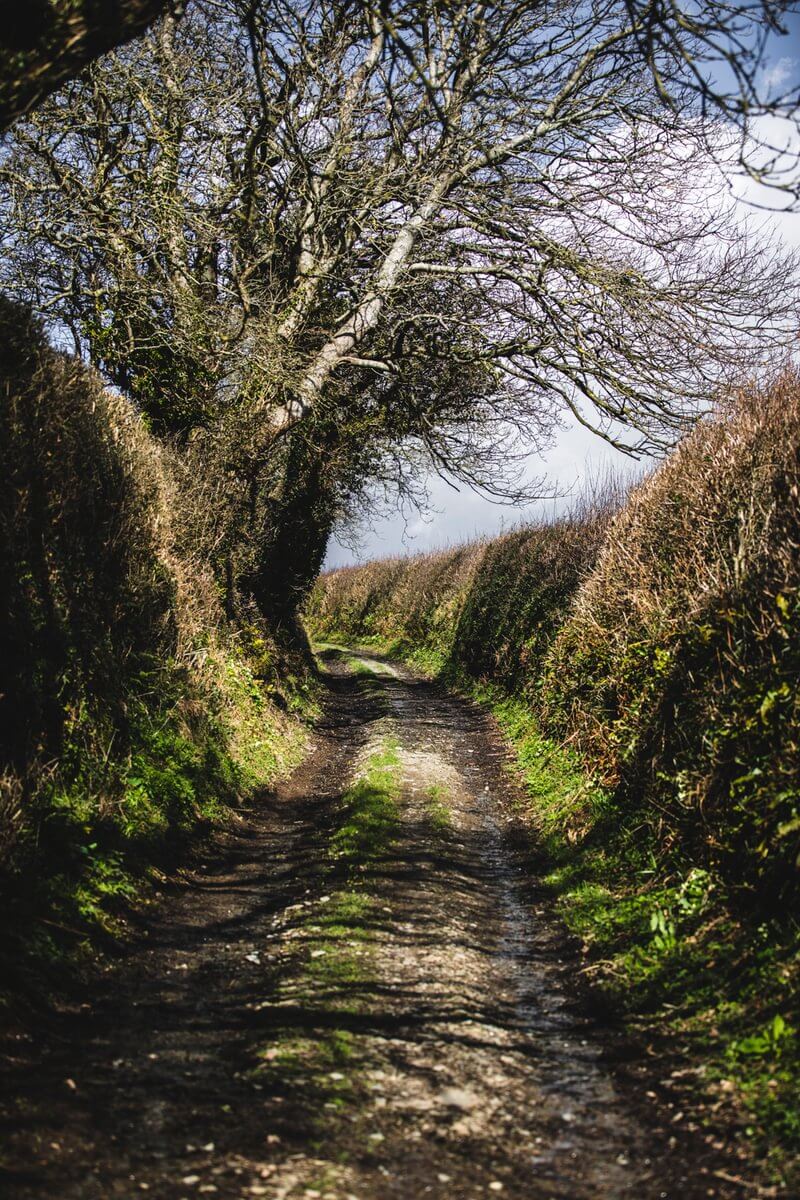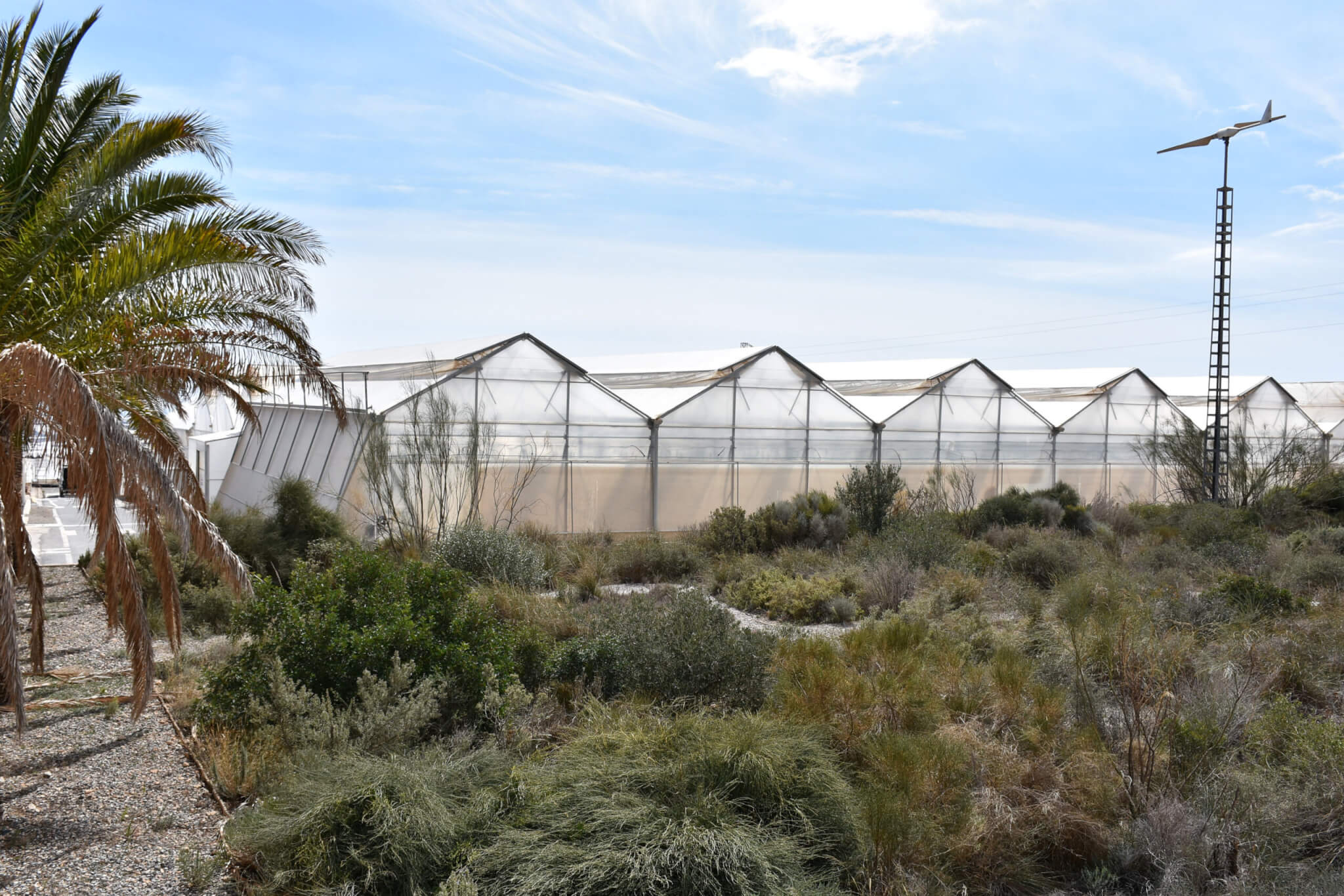During a brief break in the rain, we picked the first strawberries this morning. Inevitably the slugs had ruined half, but that will improve; sunshine and rising temperatures are predicted, allowing for faster ripening as we get into the thick of the crop.
Our rain gauge has recorded 221mm so far in May – over five times the average of 40mm, and a stark contrast to the preceding six weeks of near drought. The yard is full of lettuce and cabbage plants waiting for a break in the rain before they can be planted; thankfully, none have yet been lost.
Such rain, with its warmth-trapping blanket of cloud, can usually be expected to protect crops from frost at night – but on the 22 May, 12 days after we would normally reckon to be free of frost risk, the clouds cleared briefly in the early hours, allowing the cold to descend into the valley with our squash and pumpkins. By dawn, it was raining again – but to our disbelief, the plants had the translucent, droopy leaves left by a brief kiss of frost. The stronger plants are now struggling to push out new leaves, and we must wait to see how many survive. We have ordered more seed, but those planted later will need a good summer and autumn if the fruits are to mature in time.
The first pickings of Little Gem lettuces, Batavia lettuces and salad leaves, planted in the bright, dry weather earlier this year, have been excellent. Later plantings have been blighted by gales, which twice shredded the protective covers and have delayed the crops. Elsewhere, the first Cornish potatoes will be dug on the ‘Golden Mile’ east of Penzance next week (weather permitting), and the first UK carrots are expected at the end of June; we are running two or three weeks late.

For the last two years, we have been able to pack a good, if slightly repetitive, 100 per cent UK Veg Box right through the Hungry Gap (the few weeks between winter and spring harvests), but this cold spring has made it impossible. All being well, the box will return from 7 June. With ever less reliable weather at home, added to the growing appetite for local fruit and veg, it is time to consider more investment in polytunnels and long-term cold storage to bridge the Hungry Gap.
We need to check that the carbon cost of building and running these would be lower than the transport emissions saved, but I suspect these investments could reduce our carbon footprint while maintaining an acceptable variety of homegrown veg all year.












Sorry to hear about the climate travails afflicting the crops.
I would be interested to hear what the arithmetic says about the cold storage. Does it make sense to invest in local renewable energy generation at the same time to provide for the cold storage, or is it better to rely on the grid with a renewable tariff?
I understand and sympathise with your problems as my seedlings just stopped growing and yellowed due to lack of light. However how do you justify the use of polytunnels with heavy use of plastics and covering of the soil. Is this a sustainable way of growing? I hate the idea of covering the countryside with plastic and also wonder if this is a seasonal and organic way of eating?
It’s a good question, and while it’s certainly not black and white but polytunnels do have their advantages. They extend the UK veg growing season, reduce air miles, and mitigate crop losses due to disease and bad weather. The plastic used lasts a minimum of ten years, and is entirely recyclable. In this sense they are justified.
But you’re right, it’s not a perfect solution and wherever humanly possible Riverford and Guy would rather not be using plastic. Home compostable packaging is now a viable alternative for the veg itself in the boxes, but would not yet be strong or resilient enough to cope with the high temperatures and weather conditions that polytunnels often have to endure. But hopefully as the sector develops, it will be able to replace all sorts of plastics, including the polytunnels.
Jack – Staff Writer
Get rid of plastic is the shout! But build more polytunnels? ? ? But are not polytunnels made of plastic? . . . . . . . . anybody ever heard of glass? Good stuff glass, did us well for many years! Ah well you never can tell with “exspurts” can you?
The Walrus ~ Late as usual!